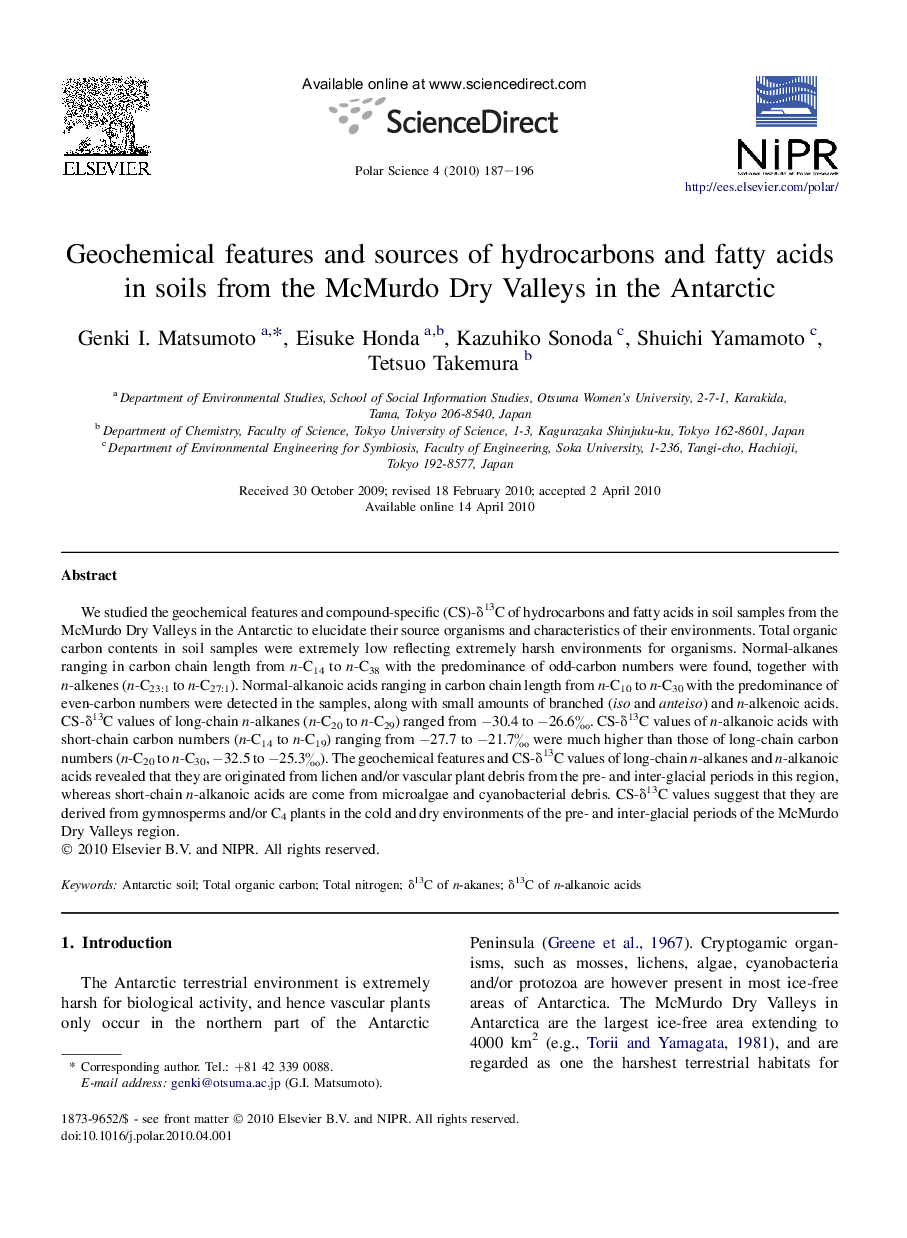| Article ID | Journal | Published Year | Pages | File Type |
|---|---|---|---|---|
| 4683302 | Polar Science | 2010 | 10 Pages |
We studied the geochemical features and compound-specific (CS)-δ13C of hydrocarbons and fatty acids in soil samples from the McMurdo Dry Valleys in the Antarctic to elucidate their source organisms and characteristics of their environments. Total organic carbon contents in soil samples were extremely low reflecting extremely harsh environments for organisms. Normal-alkanes ranging in carbon chain length from n-C14 to n-C38 with the predominance of odd-carbon numbers were found, together with n-alkenes (n-C23:1 to n-C27:1). Normal-alkanoic acids ranging in carbon chain length from n-C10 to n-C30 with the predominance of even-carbon numbers were detected in the samples, along with small amounts of branched (iso and anteiso) and n-alkenoic acids. CS-δ13C values of long-chain n-alkanes (n-C20 to n-C29) ranged from −30.4 to −26.6‰. CS-δ13C values of n-alkanoic acids with short-chain carbon numbers (n-C14 to n-C19) ranging from −27.7 to −21.7‰ were much higher than those of long-chain carbon numbers (n-C20 to n-C30, −32.5 to −25.3‰). The geochemical features and CS-δ13C values of long-chain n-alkanes and n-alkanoic acids revealed that they are originated from lichen and/or vascular plant debris from the pre- and inter-glacial periods in this region, whereas short-chain n-alkanoic acids are come from microalgae and cyanobacterial debris. CS-δ13C values suggest that they are derived from gymnosperms and/or C4 plants in the cold and dry environments of the pre- and inter-glacial periods of the McMurdo Dry Valleys region.
